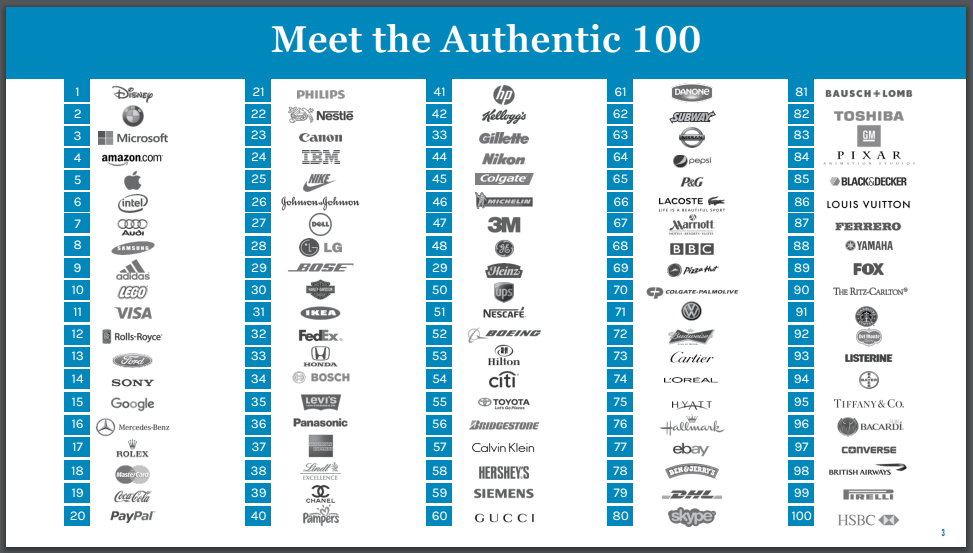By WittyPen
Millennials are the most educated, open minded and dynamic demographic that exists.
They are independent and have started making their purchasing decisions. For a marketer, they are the most lucrative set of audiences for marketing any product or service.
However, the set of characteristics and traits they possess make them the unique people to market or sell. One can’t use the same marketing strategies to lure them into a brand or acquire, convert and retain them for long. Since they form a huge part of the population, the opportunity is magnanimous.
A marketer can never ignore Millennials and become successful in marketing a brand. Initially, you need to create an excellent brand worth reverence and then implement marketing strategies which millennials respond to.
Let’s see how you can do them right.
Although millennials aren’t as loyal as the older generation is, but they stick to the brand they love.
If they like a brand, they’ll be vocal about it and spread the word. And if they don’t, they’ll be equally expressive about it in any medium they get.
Thus, branding for millennials is a tricky path to tread, but by keeping a few important things in mind, you’ll be able to create a brand they find awesome.
Be authentic to the core
Authenticity breeds trust and trust breeds business. Authenticity matters.
The truthful words said by top LinkedIn influencer and best-selling author, Dave Kerpen.
This stands even truer for millennials who possess an innate ability to sense brands that are fooling around. They look up to brands which are highly authentic in all what they do.
It is very important to create a genuine bond with each of your customers as it helps to evoke a feeling of trust.
Instead of trying to fabricate your brand image, focus on being your self and gain respect for it.
As per a recent research by Cohne & Wolfe, who are known to conduct studies to measure the authenticity of brands, these are the top 100 authentic brands.
If you notice, they truly have worked hard over the years to create an image which people, majorly millennials think as authentic.
Position yourself to please them
Creation of a great brand depends on its positioning in the market. There are several examples of companies failing miserably just because their position wasn’t right.
To reach your target audience and ensure that they are attracted towards your brand, you need to create a desirable position for it.
Millennials are highly diverse, and most of them have unique choices. While building a brand, you must consider their needs and position accordingly. Good positioning also helps in highlighting the characteristics and core attributes of the brand.
Tesla Motors is a great example of positioning a brand to appeal a particular section of people. Electric cars were quite uncool before Tesla came in and took the market by storm. Right from the beginning, Tesla positioned itself as a high-end electric car maker with exemplary aesthetics, all of which the other brands lacked. Rest of all, as they say, is history.
Exude uniqueness
Millennials believe themselves to be unique and they want their brands to resonate their personalities. No matter what products or services your brand offers, the branding needs to be unique in order to appeal the millennials.
Uniqueness depends on perception, but it takes a lot of efforts to stand as a purple cow in a herd full of common brands.
Staying relevant in an age where people have the lowest attention span needs your brand to exude uniqueness and as a marketer, it is your job to make it happen.
Uber has been a fine testimony of unique branding; their service is as simple as it gets. Millennials are always on the move, and Uber has become their go-to app for whenever they are out of the house. Their product as well as the brand they have created widely captures the instinctive nature of millennials.
This TVC by Uber brilliantly empowers every common man to make their dreams come true through Uber and shows a message to #EmpowerAMillion Entrepreneurs by 2018. This is something millennials immediately connect with.
Be admirably interesting
Being interesting as a brand is a different ball game altogether. The Gen-Y simply can’t stand something boring because they live in a world where the most interesting thing gets all the attention and that is all that they crave.
To seek positive attention – which is one of the core aims of marketing – is to become admirably interesting.
A brand seems alive only if it is interesting enough and keeps making efforts to be so.
Google is one of the most interesting brands in the world, and it’s difficult to imagine the internet without it. Although the product seems like the simplest tool for consumers, it takes a lot of efforts to make this simple brand admirably interesting.
Be it the extremely creative Google Doodles, the quirky hidden tricks or the infamous April Fool pranks; they have constantly been the most interesting brand on the planet.
Stand up for what you believe
Millennials have strong opinions, and they like to stand up for what they believe. When a brand does the same, the instantly start liking it.
The reason is the resonance of personalities, when your brand believes in something and advocates it through various campaigns, people who believe in the same thing will form an inclination towards your brand.
Standing up for your brand’s beliefs is a sign of strength which has become necessary in the current times.
Global brands which are loved by millennials have made it a point to strongly voice for the causes they believe in.
Apple Inc. has openly supported the LGBT community by various means, and it won the hearts of many for standing by what it believes in. Although it wasn’t related to the brand or their products the cause affected their consumers, and they showed their unwavering support for it.
This is all you need to build a brand for millennials; these unpredictable personalities can be the biggest source of revenue for your company. Put all your efforts and build a brand which your customers will be proud of.
Top 6 Strategies for Marketing to the Millennials – Acquire, Convert, Retain!
Once you have created a stellar brand, you need to implement marketing strategies specially designed for millennials. They have a blind eye towards cliched campaigns that are uncreative and don’t ring a bell naturally.
Trying to impress millennials through marketing is no easy job, but with the right tactics, you will be able to acquire, convert and retain them in the long haul.
Let’s see some of the most useful ones.
a) Be where the millennials are
Marketers must have a keen eye on all the places where their customers are. This includes venturing into all the exciting platforms millennials share their daily lives on.
If you want to market your brand to millennials and don’t have a presence on social platforms like Instagram and Snapchat Inc., you are doing it all wrong. These platforms provide enough marketing avenues already, and they will keep upgrading their platforms to offer marketers the ultimate value of their efforts.
Thus, they are huge customer acquisition mediums as far as millennials are concerned.
Taco Bell is widely known for their creative and expressive social media campaigns.
Recently, they came up with some unique strategies to reach out to their target audiences, the millennials. This detailed case study shows how they leveraged the power of social media to tap into the lives of Millennials.
Also, their Twitter handle has been very popular lately owing to a superb interactive presence on the platform.
b) Build a relationship
Relationship marketing is an old technique but works like a charm for millennials.
They are always up for a deep bond which needs nurturing, and brands can use the same humane qualities for building a relationship with their customers like they would do for a person.
Although it takes a tonne of efforts to maintain a good relationship, it is well worth in the long haul.
The core aim of relationship marketing is to allow more customer retention and satisfy them with your product or service instead of focusing on sales transactions.
Building a genuine relationship with your customers or users is the best way to retain them for years. Though Coca-Cola just sells flavored sugary water, they know how to build a long-lasting relationship with their customers better than anyone else.
Over the years, they have consistently tried to build a unique rapport with the customers and succeeded in it.
The TVC shows one of the historical brand campaigns ever done. It was majorly targeted towards millennials since they had started losing market share of that age group in Australia.
After the campaign, their sales saw a huge rise, and it proved the prowess of a nicely executed relationship marketing campaign.
c) Content (marketing) is still the king
Many marketers believe that the era of content has passed and they need new techniques to reach customers. This is far from the truth and content or content marketing for that matter is still one of the most effective ways to reach, educate and convert users.
Although mediums of content have evolved over the years it is still as relevant as it was in the initial days, even more.
The rise of social media along with the increased viewership of videos has led to a shift in the way content marketing happens.
Nike is probably the best brand that gets content marketing right for millennials. It owned the top two spots of the most watched videos on YouTube in the year 2014.
They have diversified their content marketing strategies into videos, manuals, fitness tips and much more.
In fact, it began with content marketing right in the 1960s when it came up with a manual titled “A Jogger’s Manual” which is widely termed as the reason for the growing jogger’s culture in the US, ultimately leading to more sales for Nike.
d) Build an awesome product/service
The best marketing one can do for a brand is to create a superior product or service which speaks for itself, majorly through word of mouth.
Although different techniques of marketing are required to ensure a widespread reach for a good product, nothing beats the authentic praise of a customer.
Millennials believe their friends and family more than what any brand’s marketing campaign conveys. Thus, if you want to impress them, better build an awesome product/service and then let them spread the word.
WhatsApp and Truecaller are two outstanding examples of how a good product successfully acquires, converts and retains users without much marketing efforts. Both these brands had barely marketed their apps, but they both turned out to be revolutionary services which we use on a daily basis.
Word of mouth is a huge advantage any brand can have, and it is only possible by creating a product…
e) Provide an amazing customer service
Providing great customer service is a necessity in a time when customers have become knowledgeable and won’t tolerate someone treating them in a frivolous manner.
Your customer service is put into test when a customer faces a bad experience and the way you handle it shows how good you are. Such responses decide how loyal the customers will be in the future. Nailing such situations is one of the core things a brand can do to retain customers.
Amazon is a champion in providing an exceptional customer service.
You will seldom see a customer switching from Amazon because of a delayed or bad experience; they always make sure you have a good time while shopping at their site.
Non-surprisingly, their mission statement reads that they want to “become the most customer-centric company in the world”.
This amazing TVC by Amazon depicts exactly how they are trying to position themselves when it comes to customer service. They are equating themselves with the people of India, who love helping and it strike a chord with many.
f) Offer something in return
Probably every brand these days uses the strategy of providing discounts, cashback or offers to acquire and convert users.
Although this is not a good long-term strategy to retain users, it can work wonders to acquire new users and give them an opportunity to try your product or service.
Millennials are lured by such deals and would probably give your brand a try which can then convert them into regular customers.
Consider all the big e-commerce sites, payment wallets, ride-hailing apps or probably any popular internet service in the recent years, and you will find that this is the major strategy they have leveraged to acquire users because it works.
In fact, there are companies specially built to show the most valuable discounts and offers through many verticals of services.
Conclusion
Branding and marketing are two of the most challenging aspects that every business faces and now you have mastered them both.
When it comes to millennials, creating a successful brand and marketing your products to them in a unique way is essential and non-negotiable.
All the above mentioned popular brands which millennials love have rightly adapted to these branding and marketing strategies over the years to be successful.
However, with ever-evolving consumers, you need to evolve as a brand and advance your marketing strategies consistently to stay relevant.
Now that you know the effective strategies for both, simply create an awesome brand and successfully market them to millennials.
By WittyPen
Sourced from iamwire






























